Viewfinder is a puzzle game built around a single moment that I will simply never tire of.
Here’s how it works.
You see a bridge.
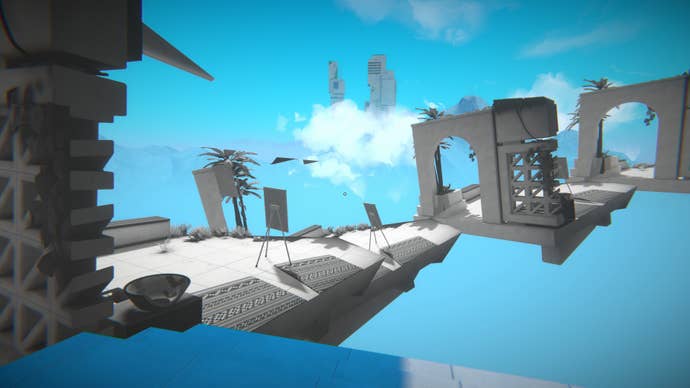
You lift your camera and take a picture of the bridge.
Choose the location, the angle, and commit.
The picture of the bridge is now an actual bridge that you’re free to walk across.

Viewfinder
This is magical.
Your 2D/3D imprint on the world is never entirely neat.
You will have eaten into the existing 3D surroundings, sometimes catastrophically.
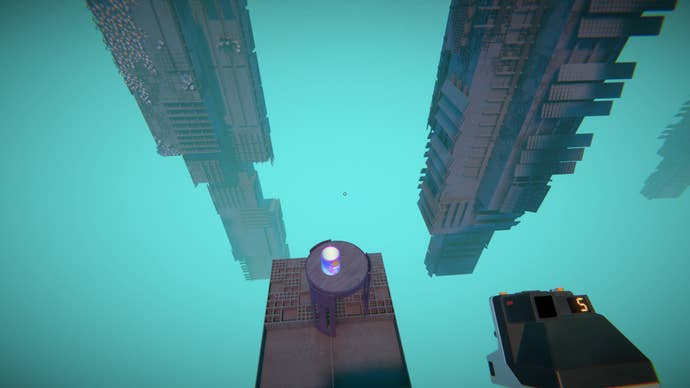
You will have sliced up the ground.
You will have imprinted a new grayscale horizon across part of the Technicolor sky.
I love all this.
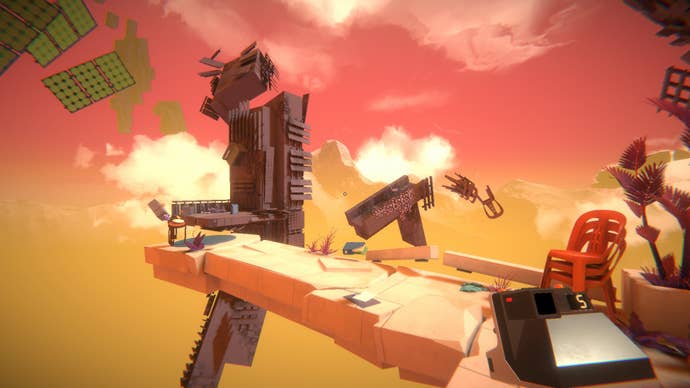
Viewfinder loves all this.
There’s a wider narrative, but it didn’t grab me to be honest.
Maybe it will grab you!
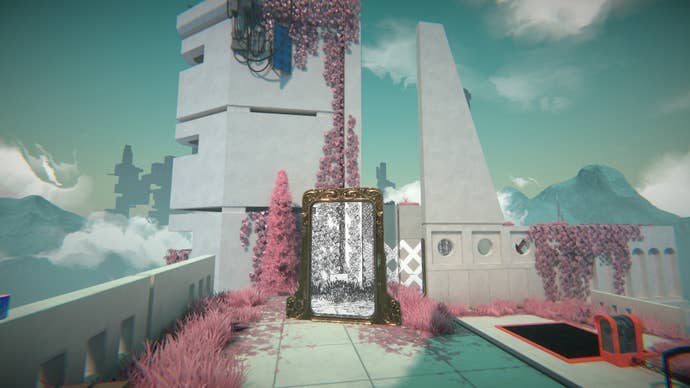
The puzzles are always pleasingly direct.
Get to the exit.
Sometimes the transporter needs to be reached, which means you’ll need a way to cross gaps.
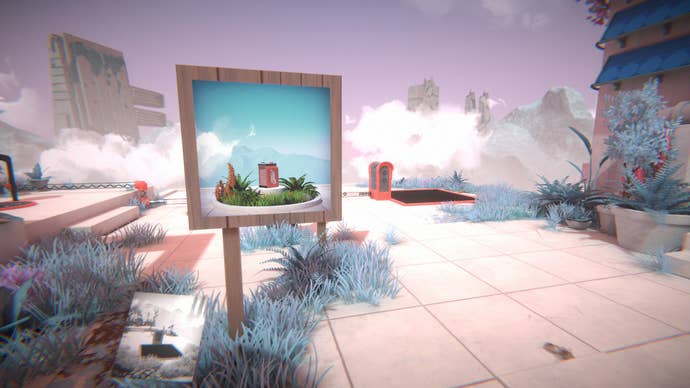
Sometimes the transporter will be caged by some kind of violet material that does not show up in photographs.
Sometimes it will be actually made of that material!
You get the idea.
A wall can become a floor if you rotate it.
A floor can become a ramp.
Some levels give you loads of leeway - loads of photos to take.
Others give you just a few.
Some give you none at all and you must locate pictures in the world to use.
These can bring about jarring art style shifts: pencil lines, pixelart.
Then there are photocopiers which allow you to create fuzzy duplicates.
You get the idea.
This is because cameras are a perfectly imperfect kind of magic.
This is the sensation the best levels of Viewfinder really taps into.
There’s something else I love about the game.
Its environments are scattered with clutter - cups and plants and Rubix Cubes and whatnot.
But they’re also filled with chairs.
And when you reach a chair you get a prompt: sit.
There’s no immediate use to a lot of these chairs.
You don’t sit and suddenly find yourself facing the solution.
But they are the fruits of an understanding on the developer’s part, I think.
Sometimes you oughta sit down and see things from a different perspective for proceed.